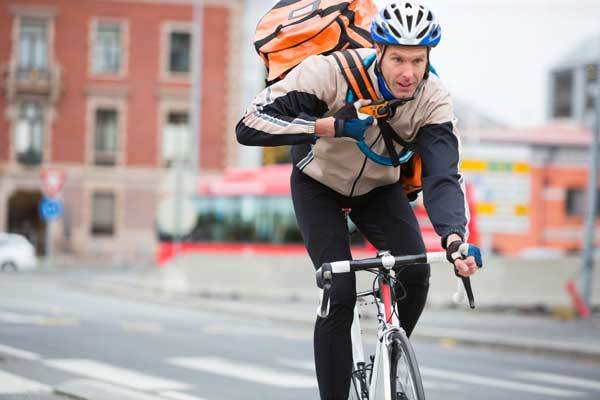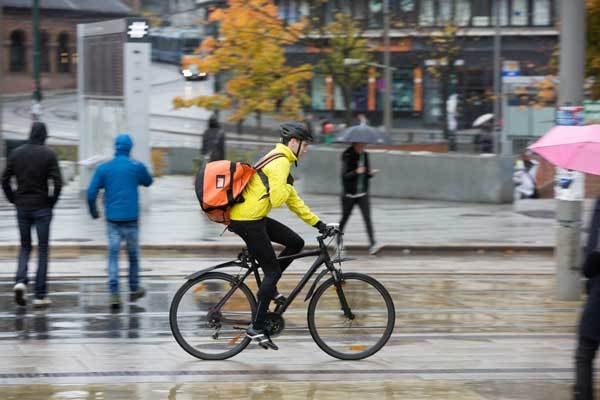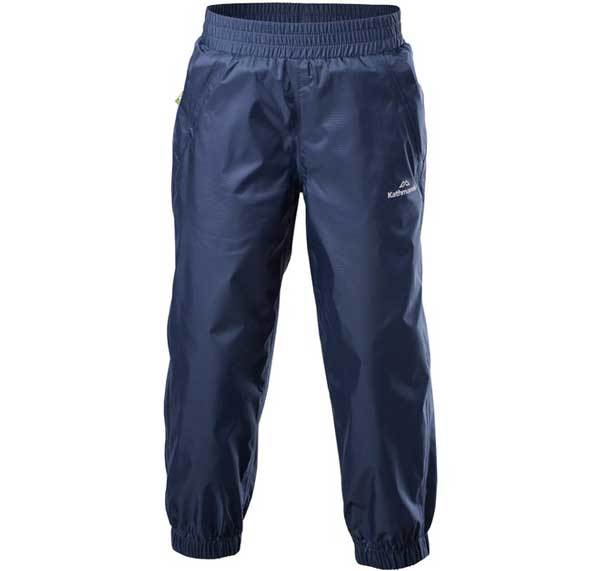Everything you need to know about how to dress for your cycling commute

One of the most common questions that people who are thinking about ditching their car in favor of commuting to work by bike ask is what type of clothes they will wear during the commute.
The answer depends on some factors, including the weather, the length of your commute, and the formality of clothes that you ordinarily wear to work.
In this article, we’ll cover everything you need to know about how to dress for your cycling commute.
Helmet
No matter what else you’re wearing during your cycling commute, be sure to put on a helmet every time you go out for a ride.

Not only helmets required by law in some areas, but they are the single most important piece of safety gear that can keep a small crash from turning into a life-changing injury.
Plus, helmets set a good example for everyone else on the road and can make you more visible to drivers.
Cycling Clothes vs. Work Clothes
The most fundamental question that you have to answer when considering what to wear during your bike commute is whether to lean towards wearing primarily cycling clothing or primarily work clothing.

This ultimately comes down to personal preference, comfort, and convenience, but there are a couple of main factors that can sway your decision.
First, how long is your commute?
If it is relatively short – only a few miles, perhaps with few hills or other strenuous sections – you may be perfectly comfortable wearing work clothing.
This is especially true if your bike is set up with a chain guard, flat pedals, and fenders that all protect your clothing from road debris and from catching on your bike’s gears. If you experience discomfort from your saddle over short distances, it may be easier to add a gel cover to your saddle rather than switch to wearing bike shorts.
Read my commuter bike buying guide here-www.rydoze.com/commuter-bikes/
Second, how formal is your workwear?
If you are accustomed to wearing tight, delicate suit pants to work, this may prove difficult even over short commute distances compared to wearing jeans,
For example. If there is a particular piece of your outfit that feels restrictive when cycling, consider switching out only this article of clothing for cycling clothes rather than your whole outfit.
Finally, what is the weather like?
If it is extremely hot or cold outside compared to the temperature inside your office, you may prefer to wear clothing that won’t leave you sweating or shivering during your ride and change at the office.
If rain is the issue, however, it is often simple enough to throw a cycling rain jacket and rain pants over your work attire and to simply remove the wet outerwear when you get to your office.
What to Do Without Showers at Work

Another concern that many potential bike commuters have that relates to dressing for the commute is what to do when there are no showers at work.
It’s an unfortunate reality of commuting to work by bike that, at least during the summer, you will almost certainly sweat.
However, even without a shower, a little sweat doesn’t mean you have to smell bad all day. Take a shower before work to start the day off clean and then bike slowly to reduce the amount you sweat during the commute.
When you get to the office, allow yourself to cool down fully, then clean yourself off using baby wipes and apply deodorant.
Pro Tip:
If there are no showers at work and you are riding in hot weather, strongly consider biking in cycling clothes rather than workwear. After wiping yourself down with baby wipes and putting on fresh clothes, no one will be able to tell that you sweated on the way into work.
Shoes

What type of shoes you’ll wear during your commute depends will ultimately depend on what type of pedals are on your bike, but you should make this decision based on the strenuousness of your commute.
If you plan to wear any non-cycling shoe – from dress shoes to flats to boots – you’ll need to have flat pedals attached to your bike.
The disadvantage of these, compared to clip-in pedals, is that you lose a significant amount of power that can help you power your pannier-laden bike up steep hills.
Pro Tip:
If you have a somewhat casual office, consider purchasing a pair of commuting shoes that are semi-formal but have a pedal clip built into the bottom of the shoe.
The other consideration when choosing your shoes is the weather.
Unfortunately, there are few ways to keep your feet and shoes fully dry when riding in the rain. Often, the best solution is to carry a dry pair of shoes and socks in a waterproof saddlebag or to keep a pair of work shoes at your office.
However, if you are determined to ride in your work shoes, you can try using a pair of waterproof overshoes or wearing waterproof socks under your shoes to keep your feet dry.
Bike Shorts
If you have a longer commute, adding a pair of bike shorts can make the biggest difference in your comfort level since the saddle can quickly become uncomfortable without some padding.

If you still prefer to wear your work clothes rather than a full cycling outfit, some thin bike shorts can double as underwear so that you can simply leave them on all day.
Also, several companies make urban bike shorts that may be acceptable as work attire at your workplace.
Otherwise, you are likely best to wear bike shorts as your primary lower attire and place your work pants in a saddlebag for safekeeping during the ride into work.
Cycling Jacket
The cycling jacket is an all-purpose piece that pairs well with either a full cycling outfit or your work clothes – remember to purchase a large enough size of the jacket so that it can fit over your work clothes.

Your cycling jacket should serve as an insulating layer for riding in the fall and winter, but it is typically best to opt for a lightweight jacket rather than a thick, fleece-lined piece so that it can also serve as your rain jacket all year long.
Also look for a jacket that has a dropped back that can protect your back from road spray when riding in the rain – your work shirt underneath will thank you.
Your cycling jacket also has one more purpose – making you visible.
Although it may look geeky, choose a jacket that is neon-colored or covered in reflective tape so that you are easier for cars to spot in the rain or the dark.
Rain Pants
Like your cycling jacket, your rain pants can go over either a cycling kit or your work clothes whenever the weather is bad or when it gets cold in the fall and winter. These pants should be both waterproof and highly breathable since it is otherwise easy to sweat profusely inside your rain pants when the weather is warm and humid during summer rains.

Although they come at a price premium, pants made with Gore-Tex or a similar high-end breathable fabric are well worth the cost if you plan on wearing your work clothes underneath your rain pants.
Also, like the rain jacket, your rain pants should be colored or covered in reflective tape to make you more visible to drivers in dark, rainy conditions.
Cold Weather Commuting

The advantage of commuting in cold weather is that you’re less likely to sweat. The disadvantage is that it requires a pile of insulating clothing on top of your work clothes as well as some specialized gear.
In general, you’ll want to switch out your work shoes for heavy boots or cycling shoes with overshoes to keep your toes warm. Also, consider wearing heavy wool socks rather than your typical thin work socks if the weather is especially frigid.
For your hands, there are several options. In mild weather, glove liners may be enough to keep you warm. However, as the weather gets increasingly colder, you’ll want to invest in a pair of cycling mittens. In extreme conditions, you can even stuff your gloved hands inside a pair of bar mitts to keep out the wind and rain.
For the rest of your body, any insulating clothing you have will work – although you may have to change when you get to your heated office. Wear tights under your pants and a thick baselayer under your shirt or a fleece layer under your jacket. If needed, add a face mask or a neck warmer to your attire to keep your cheeks from being frostbitten.
Pro Tip:
Remember to start your ride slightly cold and warm up as you go, since overdressing will leave you sweating halfway through the ride. As the saying goes, “Be bold, start cold.”
There is no single best way to dress for commuting to work by bike – the best attire depends on your length of commute, personal preferences, and the season, and can change daily with the weather.
However, understanding the basic principles of how to dress for a cycling commute can help you make the right decision for you about what to wear and what cycling clothes to invest in.

